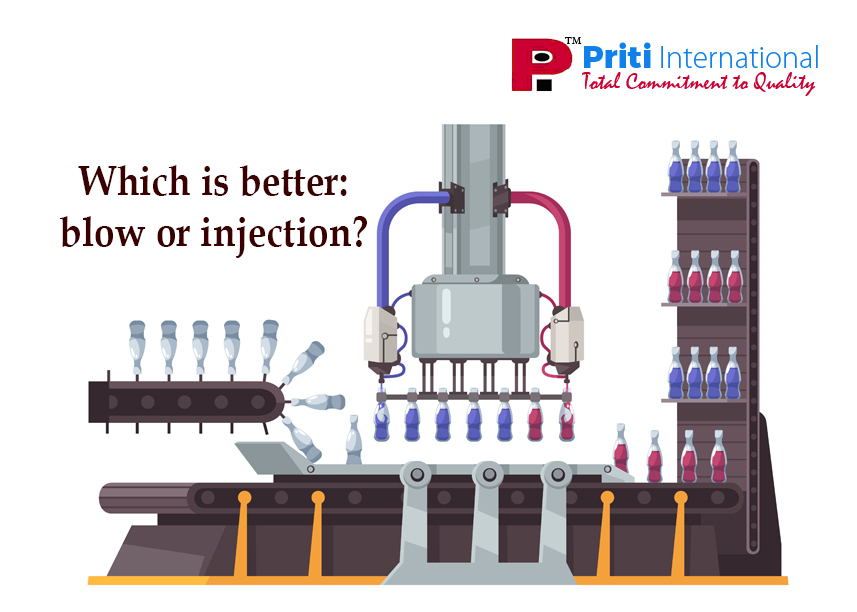Which is better for you, injection moulding or blow moulding? This article will assist you in comprehending clearly. Learn about the best PVC and HDPE moulding machine manufacturers.
Manufacturers and engineers need to be familiar with different types of molding processes to produce high-quality products in a cost-effective manner. Two of the most common processes are blow molding and injection molding. In this blog, we’ll compare these two processes in terms of their processes, materials, design flexibility, and cost-effectiveness.
Blow Moulding Process
Blow molding uses air and hollow-shaped tools to create hollow objects with one-piece construction. The process begins with melting the plastic resin into a hollow tube, popular as a parison, which one can later clamp into a mold. Air then enters into the tube, expanding it to conform to the mold’s shape. HDPE molding machine has a capacity for high-volume, one-piece hollow objects with thin walls and uniform shape. The process is typically helpful for the production of bottles, containers, and other similar products.
Injection Moulding Process
Injection molding involves melting the plastic resin pellets into a liquid, and then injecting the melted material into a mold. The mold contains two halves that have clamping together under high pressure, and injects the material into the cavity where it solidifies. After forming the part, the mold opens, and the part is ejected. PVC molding machine is versatile and can be useful to create complex shapes, textures, and details.
Design Flexibility
Injection molding offers more design flexibility than blow molding. This type of molding can produce more complex parts with intricate details, while blow molding is best for simple, uniform shapes. Also, injection molding can also use a wide range of colors and finishes.
Materials Used
Blow molding typically uses materials such as polyethylene, polypropylene, and PVC. Injection molding uses a broader range of thermoplastics and thermosets, including polycarbonate, nylon, and ABS.
Cost-Effectiveness
Blow molding is typically more cost-effective for high-volume production runs. Injection molding, on the other hand, has higher startup costs due to the mould creation and the initial design work, but it offers a more cost-effective process for producing lower volumes of parts.
Lessons To Learn
Both blow molding and injection molding have their advantages and disadvantages. The decision to choose one over the other will depend on factors such as product requirements, production volume, design complexity, and budget. Ultimately, manufacturers and engineers must weigh the benefits and limitations of each process to determine which method suits their specific project better.
Conclusion
Priti International’s HDPE PVC moulding machines are the pinnacle of excellence. These moulding machines have distinct features and offer an affordable option to everyone. Because of their extensive experience over the years, they have earned the trust of many clients.

